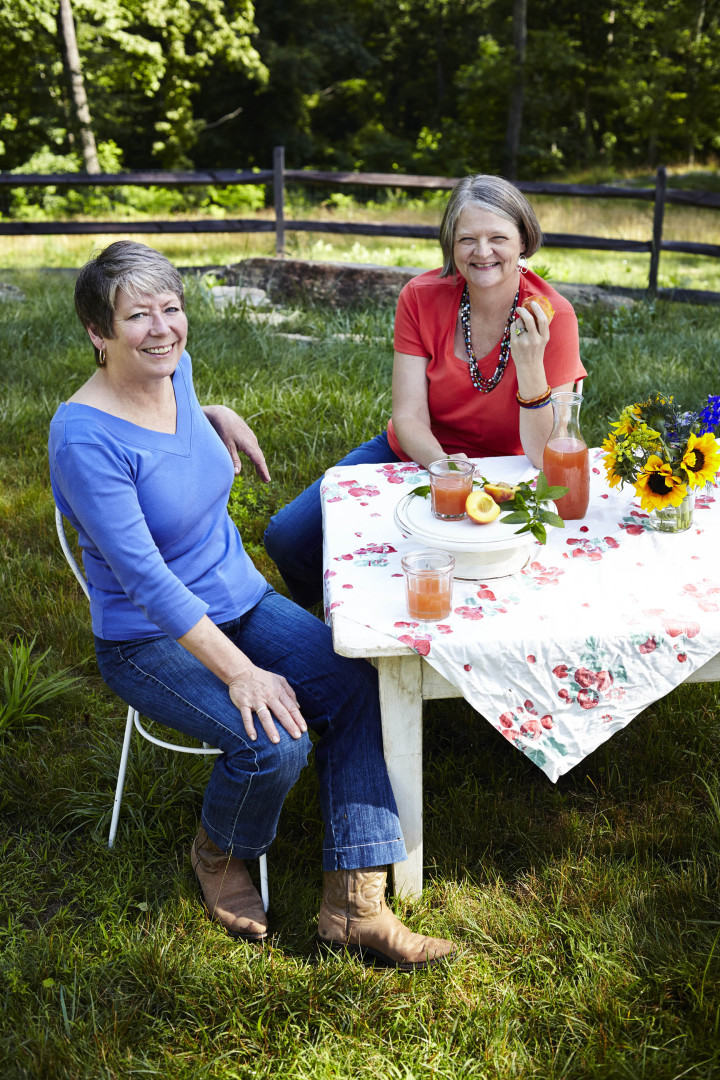Surprise! Mint wine doesn’t taste sweet or syrupy, as you might expect, but light and only slightly minty. Crystal-clear mint wine, ever so slightly effervescent, serves up like vinho verde. (Caution: Don’t use chocolate mint or other strongly flavored mint varieties. Instead, use standard spearmint, or “grandmother’s mint,” as it is called.)
Make mint wine any time of year when the mint isn’t blooming. In late spring, before summer’s heat has removed some of the flavorful essential oils from the leaves, the wine rises to its very best. You will need to start with about double the amount of mint leaves called for in the recipe, because the stalks and any damaged leaves must be discarded.
— DeNiece Guest and Nan Chase

Garden mint wine
From Drink the Harvest: Making and Preserving Juices, Wines, Meads, Teas, and Ciders
Note: Be sure to let this wine age at least 6 months in the bottle so that it mellows.
Yield: Approximately 1 gallon.
Preparation time: 45 minutes to 1 hour, plus additional time for cooling, fermenting, racking and bottling.
1 gallon of filtered water
1/2 cup orange or other sweet juice
2 teaspoons (1 packet) Pasteur Champagne yeast or white wine yeast
4 cups sugar
2 quarts of fresh mint leaves, cleaned and washed (no stems)
Bring 1 gallon of filtered water to a boil in a large pot, for steeping the mint inside a 1-gallon fermentation jug. Add enough filtered water to the orange juice to make 1 cup. Heat the juice and water to lukewarm (approximately 100-105 degrees F) and sprinkle with the yeast. Set the mixture aside to let it “proof.”
Pour the sugar into a sterilized fermentation jug (a large funnel makes this easier). Pour 2 cups of the boiling filtered water into the jug and swirl or shake it until sugar is dissolved. Add the mint leaves, stuffing them into the jug with a long utensil if necessary (a chopstick or long wooden spoon handle works well for this). Add enough additional boiled filtered water to fill the jug to the shoulders, leaving 2-3 inches headroom for expansion of the yeast. Allow mixture in the jug to cool to lukewarm (100-105 degrees F) before adding the yeast mixture.
Add the yeast mixture to the jug. Stopper the jug with a sterilized airlock, and after about an hour check to make sure the airlock is bubbling. Set the jug in a cool, dark place until the bubbling stops and the liquid clears. Yeast prefers darkness; bright light can kill yeast or stunt the growth, which can slow fermentation. This fermentation can take two weeks to several months. Don’t be concerned about how the herbs look after a few weeks, as they will darken during fermentation.
Rack the wine (this may be repeated several times until wine has cleared), bottle the wine, and let it age for at least six months.



Before you comment
The comments section is here to provide a platform for civil dialogue on the issues we face together as a local community. Xpress is committed to offering this platform for all voices, but when the tone of the discussion gets nasty or strays off topic, we believe many people choose not to participate. Xpress editors are determined to moderate comments to ensure a constructive interchange is maintained. All comments judged not to be in keeping with the spirit of civil discourse will be removed and repeat violators will be banned. See here for our terms of service. Thank you for being part of this effort to promote respectful discussion.